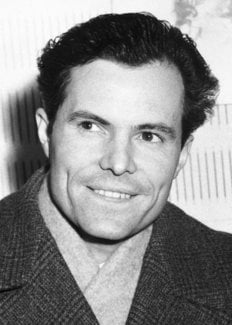Rudolf Mössbauer
Biographical

Rudolf Ludwig Mössbauer was born in Munich on the 31st of January 1929, the son of Ludwig Mössbauer and his wife Erna, née Ernst. He was educated at the “Oberschule” (non-classical secondary school) in Munich-Pasing and left after matriculating in I948. After working for one year in industrial laboratories, he started reading physics at the Technical University (Technische Hochschule) in Munich in 1949 and passed his intermediate degree examinations in 1952. During the years 1953 and 1954 he completed his thesis at the Laboratory for Applied Physics at the Technical University in Munich, at the same time acting as assistant lecturer at its Institute of Mathematics. From 1955 to 1957 he worked on his thesis for the doctorate and carried out a series of investigations at the Institute for Physics of the Max Planck Institute for Medical Research in Heidelberg, in the course of which he carried out the first experimental observation of the phenomenon of Recoilless Nuclear Resonance Absorption. In January 1958 he received his degree under Professor Maier-Leibnitz at the Technical University in Munich. In 1958, again at the Max Planck Institute in Heidelberg, he provided the direct experimental evidence of the existence of Recoilless Nuclear Resonance Absorption. For the year 1959 he was appointed scientific assistant at the Technical University in Munich.1 He accepted an invitation by the California Institute of Technology in Pasadena, U.S.A., in 1960 and there continued his investigations of gamma absorption, at first as Research Fellow and later as Senior Research Fellow. He was appointed Professor of Physics at the California Institute of Technology in 1961.
From the year 1953 onwards his main work was directed towards the study of absorption of gamma rays in matter, in particular the study of nuclear resonance absorption. This led to the discovery of Recoilless Nuclear Resonance Absorption and its theoretical interpretation. During the last few years he has been investigating problems of nuclear physics and of solid state physics by applying already previously established methods.
His work in the field of Recoilless Nuclear Resonance Absorption has been rewarded by the following prizes: Prize of the Research Corporation New York (1960); Röntgen Prize of the University of Giessen (1961); Elliot Cresson Medal, Franklin Institute (1961).
He is married to Elisabeth, née Pritz, and has a daughter, Susi.2
This autobiography/biography was written at the time of the award and first published in the book series Les Prix Nobel. It was later edited and republished in Nobel Lectures. To cite this document, always state the source as shown above.
1. Meanwhile, Richard Feynman had become aware of Mössbauer’s work on nuclear resonance absorption and made him accept a position as research fellow at the California Institute of Technology (Caltech) in California, USA, where he quickly became senior research fellow, and full professor in early 1962. It was there and then, when in the small hours of the day he received the phone call from Stockholm that he had been awarded the 1961 Nobel Prize for his work on Recoilless Nuclear Resonance Absorption of Gamma Radiation (1961 co-winner was R. Hofstadter), which proved to be the crucial basis for the discovery of nuclear resonance fluorescence, becoming known as Mössbauer Effect. This ME has since played an important role in applications in science far beyond physics. (Updated by the Laureate, May 2005.)
2. He had two more children with Elisabeth, a son, Peter, and a daughter, Regine. Later, he married Christel, née Braun. (Updated by the Laureate, May 2005.)
Addendum, May 2005
In 1965 Rudolf Mössbauer accepted a call from the Bavarian Ministry of Culture, Education & Research to become full professor at Technische Universität München, where his scientific interests shifted from nuclear research towards neutrino physics. It was in 1972 that he went to Grenoble (France) to be Director of the Institute Max von Laue-Paul Langevin (ILL), and the German-French-British High-Flux Reactor. After the five years’ directorship period he returned to Munich in 1977, only to find his modernisation of the faculty – a prerequisite for his accepting to waive a US career for Munich – had meanwhile been reversed. Nevertheless, Mössbauer turned down several calls from other universities and Max Planck Institutes, and continued with his research on the “neutrino puzzle” (in particular neutrino oscillation experiments at Goesgen/Switzerland and solar neutrino experiments (gallex) at the Gran Sasso Underground Laboratories in Italy) until his retirement in 1997 but also beyond. In fact, it is still keeping him rather busy today, leaving him less time than anticipated for his hobbies hiking, classical piano, and photography, which stand for many anecdotes.
He holds numerous awards, medals, and prizes from universities and institutions the world over, as well as 13 honorary professorships at the most renowned universities in Europe, and abroad.
Rudolf Mössbauer died on 14 September 2011.
Copyright © The Nobel Foundation 2005Nobel Prizes and laureates
Six prizes were awarded for achievements that have conferred the greatest benefit to humankind. The 14 laureates' work and discoveries range from quantum tunnelling to promoting democratic rights.
See them all presented here.
